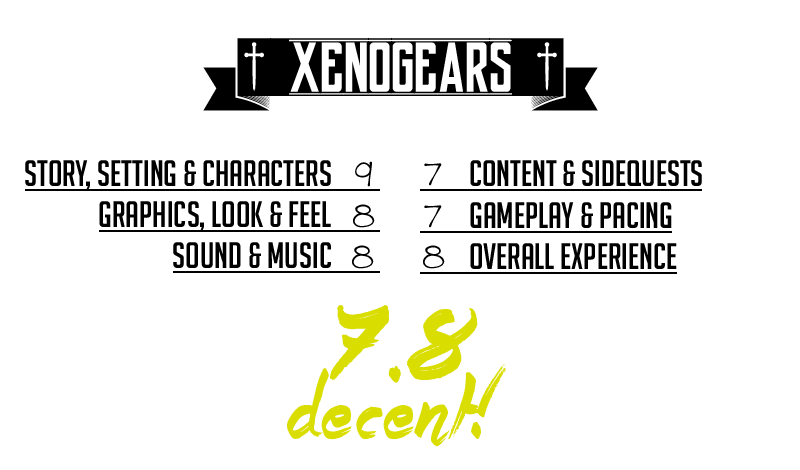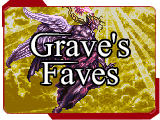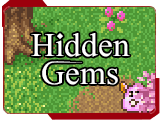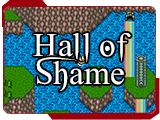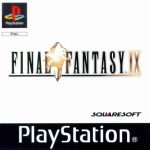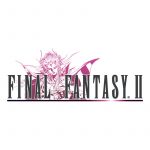Grave's RPG Reviews
Game Boy Advance · Nintendo 2DS/3DS · PC · PlayStation · PlayStation 3
PlayStation 4 · PlayStation Portable · PlayStation Vita · RPG Maker · SNES · Switch · Wii
WiiU · Xbox 360 · Xbox One
Xenogears
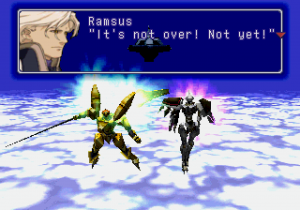 It’s honestly difficult knowing where to even begin with a review of a game of this magnitude. Originally released in 1998, hot on the heels of the more famous Final Fantasy VII, Xenogears is nothing like its cousin despite both being made by the RPG giant Square. The most important two things to bear in mind about this game are the following: the plot is dense and complex enough that it could easily have been a standalone anime series the likes of Gundam, but despite this, the pacing is so atrociously bad, the real meat and bones of the story don’t open up until the last quarter or so of the game. Xenogears is a game that demands patience and pays it back in spades, but may seem disappointing to those who don’t give it the story proper time to bloom.
It’s honestly difficult knowing where to even begin with a review of a game of this magnitude. Originally released in 1998, hot on the heels of the more famous Final Fantasy VII, Xenogears is nothing like its cousin despite both being made by the RPG giant Square. The most important two things to bear in mind about this game are the following: the plot is dense and complex enough that it could easily have been a standalone anime series the likes of Gundam, but despite this, the pacing is so atrociously bad, the real meat and bones of the story don’t open up until the last quarter or so of the game. Xenogears is a game that demands patience and pays it back in spades, but may seem disappointing to those who don’t give it the story proper time to bloom.
Essential Information
This Review: PlayStation (1998)
Near-Identical Versions: PlayStation 3 (2008), PlayStation Portable (2008), PlayStation Vita (2012)
Game Length: 55-65 hours
Critic Rating: 88% aggregateThe aggregate critic rating is based on independent review scores from several other websites.
Grave’s Thoughts
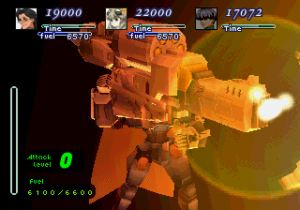 I’ve been a massive fan of RPGs — JRPGs in particular — since the days when the Super Nintendo reigned supreme. My appetite for RPGs was best described as voracious, and the advent of the PlayStation and its fantastic array of now-classic JRPGs was like a cornucopia. Unfortunately, living in the UK, I was stuck with the European market for RPGs — which is to say, despite being an English-speaking country, we’d only ever see games that had also been translated into French, German, Italian, etc. for the European market. A fair handful of RPGs never got translated outside of Japan and America and thus were never released in the UK, despite there being little good reason why we couldn’t be allowed the American versions of the games. Xenogears was one of these, and for the longest time I had a bitter resentment towards Square for never just allowing us Brits the opportunity to play the game which had already been translated into English for the Americas.
I’ve been a massive fan of RPGs — JRPGs in particular — since the days when the Super Nintendo reigned supreme. My appetite for RPGs was best described as voracious, and the advent of the PlayStation and its fantastic array of now-classic JRPGs was like a cornucopia. Unfortunately, living in the UK, I was stuck with the European market for RPGs — which is to say, despite being an English-speaking country, we’d only ever see games that had also been translated into French, German, Italian, etc. for the European market. A fair handful of RPGs never got translated outside of Japan and America and thus were never released in the UK, despite there being little good reason why we couldn’t be allowed the American versions of the games. Xenogears was one of these, and for the longest time I had a bitter resentment towards Square for never just allowing us Brits the opportunity to play the game which had already been translated into English for the Americas.
In retrospect, it’s probably a good thing that I didn’t get to play through the game fully until more recently — largely because the game’s story is so complex and multi-layered that I doubt I’d have been able to properly appreciate it as a kid. This is a game which rivals many anime series in terms of sheer complexity of plot, which I can best describe as a mix of mecha anime sci-fi, theoretical physics, Jungian psychology, and religious mysticism — all of which somehow manages to tie together and make perfect sense in the story. Unfortunately, one of the game’s most major flaws shows its face here: the pacing is absolutely terrible, and trying to get to the meat of the plot is like eating a pie with the most delightful filling, but a crust that just keeps going and going.
Another flaw of the game is that it feels unfinished in parts — the combat system is clunky and offputting at first, though later seems fairly simple and lacking in depth, and while the game’s complex and flavourful story really comes into bloom after the first forty or so hours, the sheer amount of slower-paced setup can seem offputting and boring. I’d wager there’s a great many gamers out there who never even got to the real core of the game, thanks to the glacial pace of the early-game plot. Unfortunately, the latter portion of the game is much the opposite — while the many, many mystery threads of the story are tied up and explained in the end — including the exciting opening cutscene, which actually seems to have no connection to the game whatsoever until close to the end — due to time constraints during development, large portions of the second disc had to be cut from the game entirely, replaced by scenes describing the events that the player would have taken part in.
 That’s the bad, so let’s take a look at the good — this is a fairly lengthy JRPG with an incredibly original and complex story, blending together both science and religion, along with some of the most original world-building I’ve ever seen in an RPG, albeit most of which is merely hinted at until the plot unravels in the late game. Both in its look and feel, it seems to be trying hard — and largely succeeds — to emulate the style of a mecha anime, helped especially by a handful of fully-animated, anime cutscenes. The characters (and villains) all manage to largely avoid the usual stereotypes and are fairly complex and original, all having their own varied goals and desires, even though in some cases this leads to ruin.
That’s the bad, so let’s take a look at the good — this is a fairly lengthy JRPG with an incredibly original and complex story, blending together both science and religion, along with some of the most original world-building I’ve ever seen in an RPG, albeit most of which is merely hinted at until the plot unravels in the late game. Both in its look and feel, it seems to be trying hard — and largely succeeds — to emulate the style of a mecha anime, helped especially by a handful of fully-animated, anime cutscenes. The characters (and villains) all manage to largely avoid the usual stereotypes and are fairly complex and original, all having their own varied goals and desires, even though in some cases this leads to ruin.
It’s almost impossible to describe the story without delving into spoilers, so I’ll just say that while things start fairly slow — with the oft-used trope of a tranquil country village and a protagonist with a mysterious past and a lost memory — it isn’t long until the shit hits the proverbial fan, and the reluctant hero Fei is forced into a conflict he barely understands and wants nothing to do with, even though it seems as though everyone else knows far more than they’re letting on. It’s a tale of mecha, ancient religions, politics, and a huge mystery to slowly unravel — albeit one that is mostly still a tangled mass of obscurity until the closing hours of the game.
The visuals are for the most part excellent, though due to the limitations of the PlayStation’s hardware and the game’s reliance on rendering everything in three-dimensional polygons (no pre-rendered backgrounds here), it’s not quite as visually impressive as it could have been on more capable hardware (or if tricks such as pre-rendered backgrounds were used, as seen in the PlayStation Final Fantasy games), and it feels as though the designers tried to do too much, hindered too heavily by the implementation. The only exception to this rule are the character models, rendered as strangely-scaled two-dimensional sprites, though the somewhat jarring effect is easy to forget after playing the game for a while.
Despite its niggling flaws, however — many of which I fear are the reason Xenogears isn’t nearly as well-known as it could be — it’s a mostly solid experience which is ready to richly reward any with the patience to slog through the laggard pace of the early game. If the opening cutscene and the idea of a mecha-based, anime-style RPG are intriguing, then by all means, find yourself a copy and give it a try — if you can forgive its flaws and missteps, this may very well be a game you’ll come to love.
